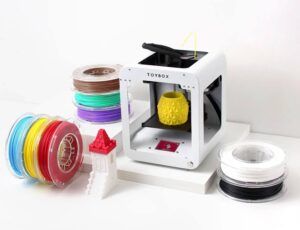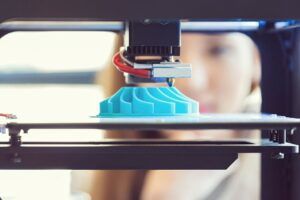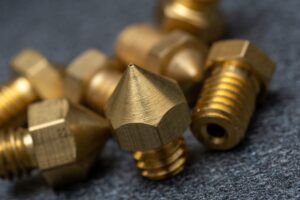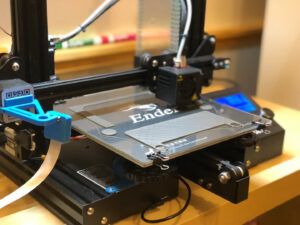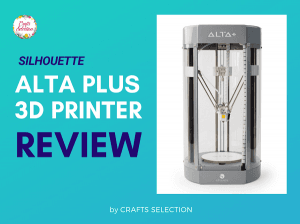It’s now easy and affordable to buy a 3D printer for beginners thanks to the advancement in the field of additive manufacturing. An entry-level 3D printer that cost upwards of $5,000 in 2007 now retails at around $300 in the United States.
The influx of new manufacturers that develop high-quality, affordable 3D printers means you can buy one online right now. But how do you choose your first 3D printer? What factors do you consider? How much should you pay?
These are the questions we will answer in this short beginner’s 3D printer buying guide. Read on.

What Are Your 3D Printing Needs?
It’s 2024 and a starter 3D printer can build almost anything. From intricate engineering components to safe toys for infants to medical contraptions – 3D printing or additive manufacturing (along with AI and robotics) has revolutionized the manufacturing world.
In Europe and Asia, startups are 3D printing entire houses and solving housing issues. Therefore, as an individual, the sky is the limit for 3D printing.
But you have to be practical in these things. With an entry level 3D printer, you can model anything. From toys to showpieces, jewelry to small tools, medical implants to souvenirs – the list is endless.
Maybe you want to 3D print for education purposes; perhaps for a college term project that’s critical for your engineering education prospects?
In other words, you can build anything that you imagine with a 3D printer for a beginner. If it’s a small object like caps for your G.I. Joe figurines collection, you can print it as a single object.
For larger objects, you may have to print small pieces and then glue them together.
Here is a list of common applications of 3D printers for home use:
- Designing souvenirs, showpieces, and fashion items
- Mending broken things like pen caps and door stoppers
- Designing pop culture statues and selling them
- Creating personalized gifts for friends and family
- For educational purposes
- As a creative hobby
When you have a 3D printer at home, you will automatically see your creative juices flowing. It’s like any other crafting tool but better. You get to tinker with cutting-edge technology, experiment with your designing abilities, and design marvelous creations on the way right from the comfort of your desk.
Agree with us but not sure what type to get. Here’s some help.
Types of 3D Printers for Personal Use
When we talk about the types of 3D printers, we are essentially talking about the technologies behind them.
There are several types of 3D printing technologies, with differences in the process involved, how the materials are fused, finish and durability, and speed. You should choose according to your needs and aspirations.
Here are the most common types of good starter 3D printers.
1 – Material Extrusion – Fused Deposition Modeling (FDM)
Also known as fused filament fabrication (FFF), FDM 3D printers combine the elements of heating and modeling to print out objects. The filament or the material (through a spool) is melted to create layer upon layer based on a model that is controlled by a computer. The molten material then cools down and solidifies to get the output.
FDM is one of the most popular and affordable 3D printing types as it is easy to use, convenient, and widely popular.
Its popularity aids open-source projects and allows community-driven work. It can be used to build anything that can be extruded i.e., materials that can be thrusted out in a shape (like plastic items) using a die.
Examples of objects that can be printed using FDM 3D printers include small objects such as food items and even human organs, large items such as lightweight automobile parts, and very large models for home use.
FDM 3D printers are mostly preferred for home use where you can build everyday items or create basic proof-of-concept models. For instance, if you want to build toys, souvenirs, or small items to fix things like a kitchen cabinet, an FDM printer will be the ideal choice. The Prusa i3, one of the best-selling 3D printers in the world, uses FDM technology.
2 – Vat Polymerization Technique – SLA, MSLA, DLP
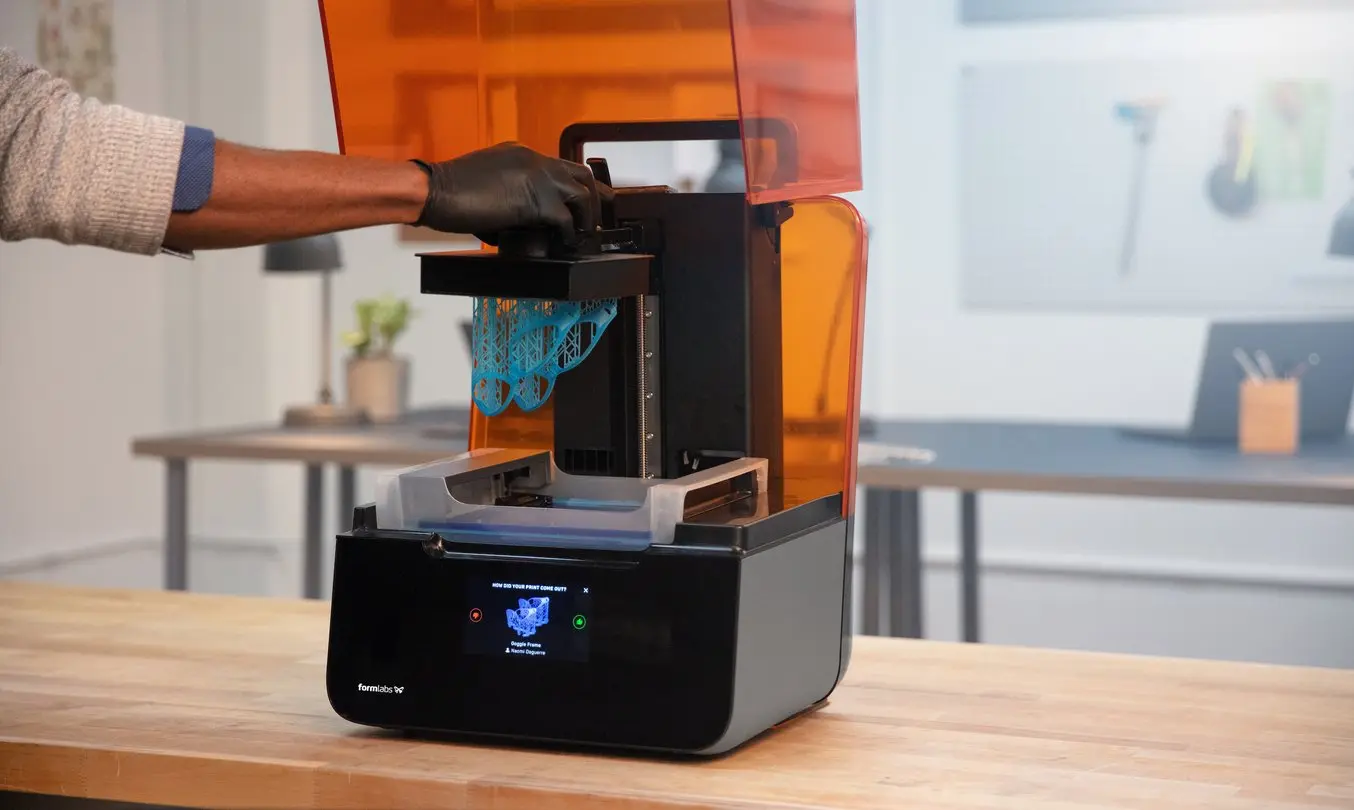

As opposed to material extrusion, vat polymerization employs photopolymer curing where liquid plastic is carved into the object to be printed. Again, the polymerization takes place layer by layer to achieve delicateness.
The three common forms of VP 3D printing are:
- Stereolithography (SLA)
- Masked Stereolithography (MSLA)
- Digital Light Processing (DLP)
The forms differ in terms of the light source used. While SLA is regarded as the oldest 3D printing technology and uses an LED light source, MSLA uses UV light through an array of LEDs.
The layers in MSLA are displayed as a mask, giving it its name. DLP 3D printers, on the other hand, flash entire layer images at once, ensuring faster printing.
Applications of vat polymerization include jewelry and medical (prosthetics, implants). It provides better finishing and detailing. MSLA and SLA printers are cheaper than DLP ones.
Other types of vat polymerization include High Area Rapid Printing (HARP), Lithography-based Metal Manufacturing (LMM), Light Enabled Additive Production (LEAP), and Digital Composite Manufacturing (DCM).
Other than these traditional types, you can also explore 3D printer pens for tiny-scale projects.
In any case, it is best to go with a top 3D printer from a reputed manufacturer than a run-of-the-mill machine. The ‘buy cheap when you are starting out’ theory doesn’t really work with tech-heavy products like a 3D printer.
But what type should you – a beginner – get? Read on for some tips on how to buy a 3D printer.
What Features Should Beginners Look For?
Now that you have a fair idea about the different 3D printing processes, it’s time to further narrow down your selection. As a beginner, you should focus more on functions and features than printing technology. Here is a list of top factors to consider while buying a 3D printer for novices:
- Print Bed Size – The size of the printer bed on which you will print your creations. The bigger the better
- Print Bed Type – Heated and adhesive beds offer better overall printing
- Material – Filament (low maintenance and easy) versus resin; depends on the type of printer
- Ease of Use – The printer should be easy to use and devoid of any coding requirements
- Safety – Look for built-in safety precautions provided by the manufacturer
- Software – Plug-and-play operation tends to be easier and more convenient; opt for free software
As you can guess, the most important factors are print quality and material. The print bed has to be of top-notch quality if you want to get usable products out of your printer. Otherwise, you will end up with poor blends. This is why we recommend heated beds or those with adhesives.
As for materials, filaments tend to be hassle-free than resins. The latter will also require curing support with machines that both are costlier and require higher maintenance.
Thus, a good entry level 3D printer will have a heated print bed and use filament. Other factors such as power, software, brand, warranty are secondary.
Tips on How to Buy a 3D Printer for Beginners
- Focus on print bed type (heated) and material (filament) to be used
- Keep a budget range in mind before looking at options
- Read up about auxiliary expenses such as those for filaments, software
- Prefer global brands over local or national manufacturers
Which 3D Printer Brands Should Beginners Choose?


In the above section, we didn’t talk much about safety. One reason for this is the default safety features that you will find in 3D printers made by top manufacturers. If you choose a reliable 3D printer brand, you will automatically get a safe product in your house.
Here’s a list of top manufacturers that make good 3D printers for home use:
- Prusa Research (RepRap Project)
- Comgrow
- AnyCubic
- Monoprice
- FlashForge
- Formlabs
- Ultimaker
- Dremel
- Eleego
- Voxelab
- Silhouette
As you can see, there are tens of different manufacturers based both in the United States and outside that mass-produce such additive printing machines. The choice of your good first 3D printer will depend on your aspirations, budget, and skill level.
As noted above, it’s better to go with a decent machine that fits your budget than opt for a costlier one that is hard to even start up. But what price range do entry level 3D printers fall in? Let’s find out.
How Much Should Beginners Spend On a 3D Printer?
Getting a good cheap 3D printer can be a challenge when different manufacturers price their products differently. As opposed to that of regular printers, the 3D printers’ industry is not regulated. While one manufacturer might price its high quality 3D printer at $500, another might price its best budget 3D printer at $400.
The selection won’t be this hard if you set your budget first. According to us, you can buy your first 3D printer in the range of $200 and $500. Of course, you will need to consider the additional expenses such as materials and software.
Spend anything more than $500, and you will enter the mid-level territory. As a beginner, opt for an entry-level model to see if 3D printing is really for you. You can invest in an advanced machine later.
Conclusion
You may now be wondering: what is the best 3D printer for beginners?
Unfortunately, there’s no one right answer to that question. You can choose an ideal one depending upon your appetite, budget, and personal preference. What works for you may not work for the next person.
This is why we created this short guide on how to choose the best beginner 3D printer. We hope this helps you find your ideal hobby machine.

